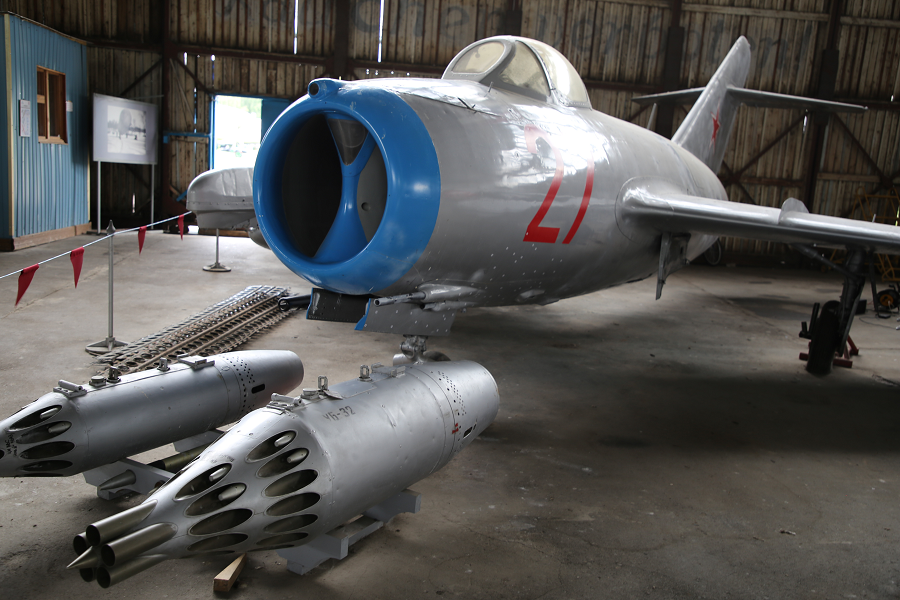MiG-15 bis. A Soviet front jet fighter from 1949.
Flight range – 1220 km, max. speed – 1076 km/h, ceiling – 15500. Used in the Korean war
The Mikoyan-Gurevich MiG-15 is a jet fighter aircraft developed by Mikoyan-Gurevich for the Soviet Union. The MiG-15 was one of the first successful jet fighters to incorporate swept wings to achieve high transonic speeds. In aerial combat during the Korean War, it outclassed straight-winged jet day fighters, which were largely relegated to ground-attack roles. In response to the MiG-15’s appearance and in order to counter it, the United States Air Force rushed the North American F-86 Sabre to Korea.
When refined into the more advanced MiG-17, the basic design would again surprise the West when it proved effective against supersonic fighters such as the Republic F-105 Thunderchief and McDonnell Douglas F-4 Phantom II in the Vietnam War of the 1960s.
The MiG-15 is believed to have been one of the most produced jet aircraft with more than 13,000 manufactured. The MiG-15 remains in service with the Korean People’s Army Air Force as an advanced trainer.
An improved variant, the MiG-15bis (“second”), entered service in early 1950 with a Klimov VK-1 engine, another version of the Nene with improved metallurgy over the RD-45, plus minor improvements and upgrades. Visible differences were a headlight in the air intake separator and horizontal upper edge airbrakes. The 23 mm cannon were placed more closely together in their undercarriage. Some “bis” aircraft also adopted under-wing hardpoints for unguided rocket launchers or 50–250 kg (110–550 lb) bombs. Fighter-bomber modifications were dubbed “IB”, “SD-21”, and “SD-5”. About 150 aircraft were upgraded to SD-21 specification during 1953–1954.











